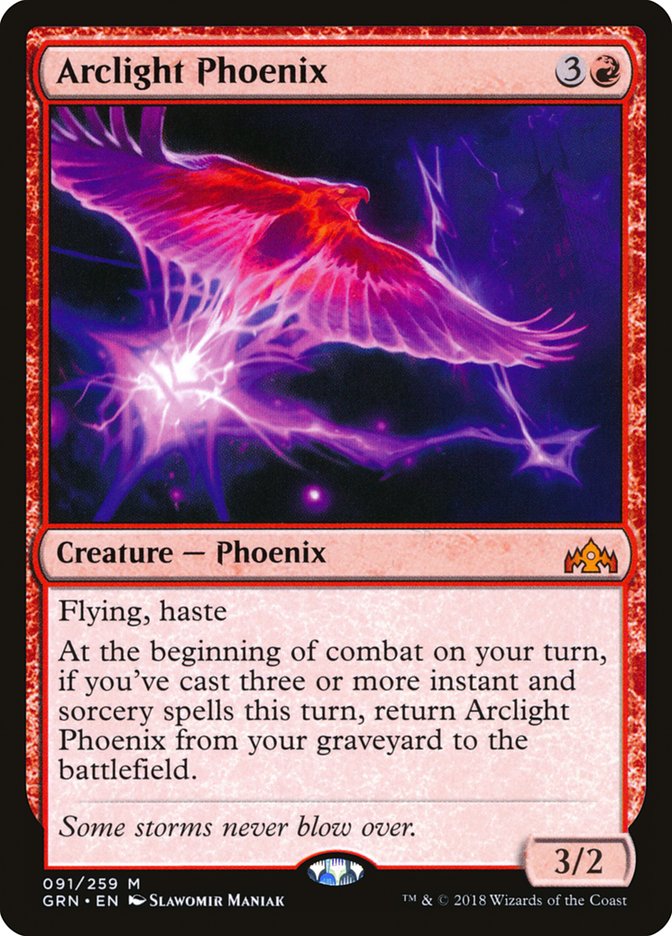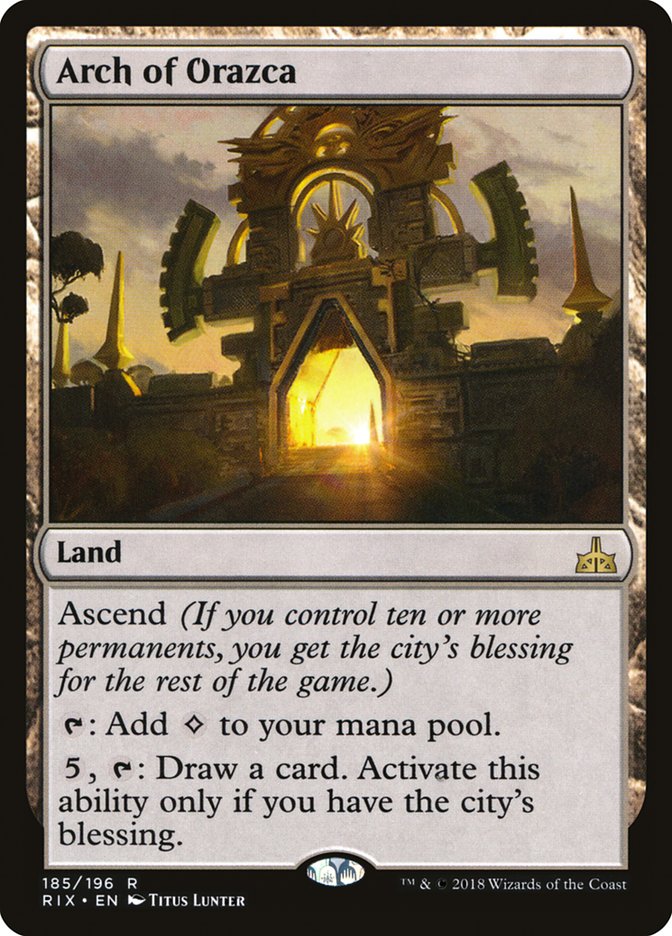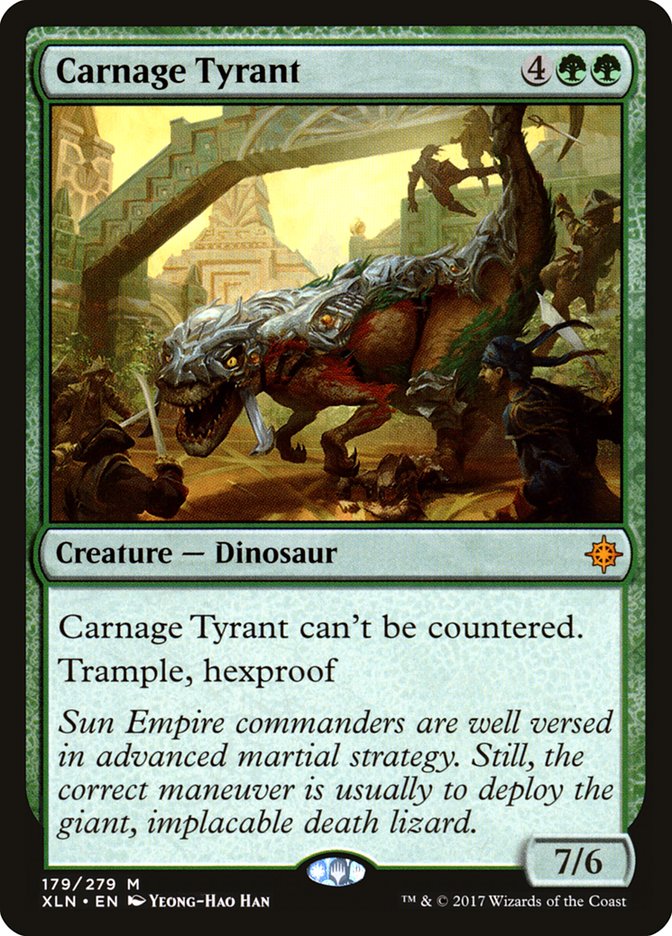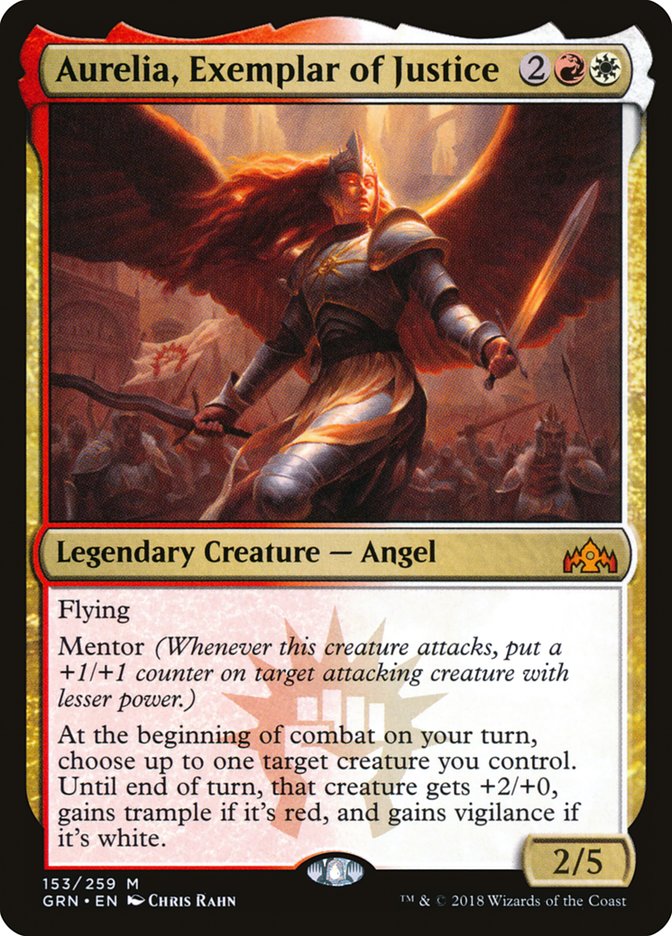Despite Golgari Midrange’s status as the deck to beat going into the tournament and the fact that around two-thirds of players with three byes chose the deck, it failed to carry a single player to the Top 8. That’s a pretty shocking failure for a “best deck” with that kind of representation, and I believe this tournament should force a complete re-evaluation of what this format is fundamentally about.
For my part, I played Selesnya Explore:
Creatures (20)
Lands (22)
Spells (18)

The deck has a feel similar to Anointed Procession decks, in that you have creatures that can generically pressure someone, and then you explode into a big end-game that goes way over the top of other midrange strategies.
March of the Multitudes with Path of Discovery on the battlefield allows you to use many explore triggers to dig for your next big spell, and things snowball out of control very quickly from there.
The idea is that it’s a synergy deck with linear payoffs that allow it to trump opposing strategies if it’s undisrupted, but thanks to explore, it has enough card advantage to play a decent grindy game against people who are trying to disrupt it.
The best way to beat a deck like this is to either go way over the top with your disruption: counters, card draw, sweepers, or attacking from an angle it can’t defend well against, meaning fast fliers. This deck is good against opposing ground creature decks, and Wildgrowth Walker can gain enough life to outpace opposing midrange fliers.
This means the deck is relatively good against red-based aggro, Selesnya, Boros, and Golgari, but can struggle against Jeskai Control and Arclight Phoenix.
Both of those strategies are relatively weak against Adanto Vanguard, so the idea was to try to do an impression of a white aggro deck with those after sideboarding.
Several of my teammates played the same deck, and collectively, we had a decent, but unspectacular showing. Matt Severa lost to a topdecked Fiery Cannonade from Eduardo Sajgalik playing for Top 8, and we won around 62% of our matches.
Personally, I started 7-0 but then lost five matches in a row, three of them to Arclight Phoenix decks.
If I were to play this deck again with the same expectations I had going into this tournament (that is to say, if I were simply improving the Level 1 functioning of the deck rather than trying to adjust for a new metagame), I’d cut all of the Flowers. I lost several games to hitting them off explore when I needed a land, and while Flourish is great in the deck, the cost is just too high.
I’d play Arch of Orazca instead of one of them, as I love the card in the deck, but didn’t want to play it with Flower in the deck because opening hands with Arch of Orazca and Flower don’t function, another with the fourth Memorial to Glory, and the last would either become Selesnya Guildgate or Plains, I’m not entirely sure which.
I’d also want to lower the curve a little, maybe replace one The Immortal Sun with a Vivien Reid (they play badly together, but so do two copies of The Immortal Sun) and likely replace a Trostani and/or March of the Multitudes with a cheaper spell, probably a three-drop, most likely Elvish Rejuvenator (which also certainly doesn’t want Flower in the deck). I liked the sideboard we played, but maybe one Knight of Autumn could be another answer to flying creatures like Vivien Reid, Crushing Canopy, Kraul Harpooner, or Plummet.
Looking at the three-bye metagame, I think our read on the metagame was right, and our deck choice was reasonable for that, but it didn’t properly account for how things would play out and what would rise to the top in a long tournament. We beat the field, but not the winner’s metagame.
I haven’t tested enough to be sure, but my suspicion is that people figured out how to beat midrange green decks. Primarily, this meant going over the top with Izzet, either in the form of Arclight or Jeskai Control, but people also found configurations of Boros creatures that Golgari struggled with. Andrew Tenjum, who started 8-0 beating the Golgari decks he anticipated on Day 1, lamented that he didn’t get the matchups he wanted in Day 2. I suspect this was a product of Golgari falling out of the winner’s metagame rather than an unlikely coincidence for Tenjum.
His deck was clever. He built a creature deck without a single creature Ravenous Chupacabra could trump:
Creatures (16)
Lands (25)
Spells (19)

Like our deck, this was a better choice for Day 1, the open field at large than for the winner’s metagame, I suspect, although this does look far better prepared against Arclight Phoenix, as it has maindeck Adanto Vanguard and History of Benalia along with good removal for their creatures.
While my personal experience made it feel like Izzet Phoenix was everywhere, seventeen of the Top 31 decks contained Adanto Vanguard, almost always paired with a lot of Angels and often Rekindling Phoenix.
So, at a glance, in a low-precision, big-picture takeaway building a narrative from the data kind of way, my impression of the tournament is that Izzet decks helped exacerbate the extent to which Boros decks rose to the top and Golgari decks failed to convert. Selesnya looks, at a glance, to be comparable to Boros, but likely slightly worse-positioned.
Lumping Jeskai Control and Izzet Phoenix together as “Izzet decks” is a bit weird, but I’m doing it specifically to highlight the weakness of the colors to Adanto Vanguard, but, of course, Jeskai can play cards like Seal Away and Settle the Wreckage that shore up that weakness, which leads to the winning deck:
Planeswalkers (4)
Lands (27)
Spells (29)

I think Eli’s deck was brilliant for this weekend. It’s relatively counter-light for a control deck with few threats, focusing on removal in a way that might normally hurt in control mirrors, but it’s built around Azor’s Gateway, a card that is an outstanding way to trump other control strategies as it’s easy to resolve, easy to protect and hard to flight, and usually wins the game on the spot when it transforms.
This allowed him to build most of his deck knowing that he’d be well-positioned against other control decks just by virtue of having four Azor’s Gateways and four Expansions, so he got to play eleven maindeck cards that are horrible if your opponent doesn’t have creatures, but of course, everyone else had creatures, and almost everyone had creature removal, so really, his opponents would be the ones with blank cards, and if any of his didn’t line up well, he count just put them under Azor’s Gateway.
There’s a heavy focus on removal that exiles, so Eli’s prepared for Adanto Vanguard and Rekindling Phoenix.
This looks like a fantastic way to exploit a metagame that had gone way too deep on finding creatures that trump other creatures. Ravenous Chupacabra, the definitive creature that trumps other creatures, was getting trumped by creatures with text protecting them from it, and midrange value creatures like Jadelight Ranger were getting trumped by Angels that just literally went over the top.
Cheap aggressive creatures like Goblins were laughed out of the room by walls of explore creatures, and as a result, the casting costs of creatures people played just went higher and higher. When you’re playing a creatureless control deck, very few of the words on creatures in Boros Angels have any function, and the result is that the threats in the format simply line up horribly against you.
Carnage Tyrant has generally been the format’s way of punishing these kinds of decks, but with four copies each of Defeaning Clarion and Expansion // Explosion, it’s really not that bad to just accept a two-for-one to answer it (and any other creatures they have) and that’s assuming you don’t have Settle the Wreckage, Star of Extinction, or the sideboard Cleansing Nova.
I think Eli’s deck is built meaningfully differently from (and better than) the other Jeskai decks in the tournament for the field that existed, and that his win was extremely well-deserved.
Coming into the weekend, the question was how to beat Golgari, but now, I think the question is whether all these white midrange decks are still real contenders or whether people need to reevaluate all of their threats in the context of trying to meaningfully pressure this kind of Jeskai deck.
It’s really hard for me to imagine a deck like Boros Angels staying on top in an equilibrium state metagame. It’s just too easy to cheaply answer expensive fliers that don’t generate any value by entering the battlefield. I suspect that it was a metagame call that won’t stick around despite the power of the individual cards.
Now, the really confounding thing about this weekend’s results, as Ross Merriam identified, is trying to square the results from New Jersey with the results in Lille, where Golgari did quite well, but Mono-Blue Aggro made the final, which was won by Mono-Red Aggro, both decks that absolutely failed to perform in New Jersey.
My inclination is to say that players in Lille were behind players in New Jersey. Both tournaments started with Golgari as the most played deck and known deck to beat, but players in New Jersey largely succeeded where players in Lille failed. The Jeskai decks that made the Top 8 in Lille look like the Jeskai decks we’d expect from the period leading up to the tournament, which look worse to me than Eli’s new take.
Boros Angels barely existed in Lille, and the top decks were almost all 3-4 Chemister’s Insight Jeskai Control decks, Izzet Phoenix, and Golgari Midrange. It looks like a field that was simply less innovative, but at the same time, this might be more similar to what the future looks like, if I’m right that the metagame decks in New Jersey were more optimal for the tournament than the format and people adjust, leaving us with only decks that can withstand adjustment, which Golgari might be able to when it’s not the sole target.
I’m not sure where Standard will go from here. I think Jeskai Gateway, Izzet Phoenix, White Aggro, and Green Midrange will continue to be the pillars of the format, as I remain skeptical of Angels’ future and of Mono-Red despite its outlier victory in Lille. I think Izzet Phoenix is a fantastic deck against an open field with a few specific weaknesses, mostly to decks that try to go under it, and I think a lot of the format will be warped around trying to account for that.
If I’m right about the significance of Izzet Phoenix, the real significance of the weekend may be hidden in the ninth- through 37th-place decks from Lillie, where Izzet is heavily represented, and just as Tocatli Honor Guard shot to the top as an answer to Green Midrange, I expect answers to Phoenix to rise to prominence in weeks to come, even if they’re as pedestrian as Adanto Vanguard.
Of course, maybe what we really need to find is a trump for Jeskai Gateway.






